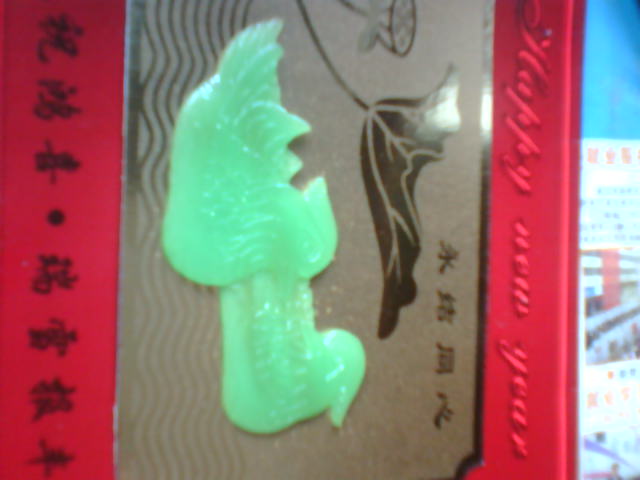摘 要
中国是大豆的起源地,也是大豆食品生产和消费大国。大豆蛋白具有很高的营养价值,除了蛋氨酸和半胱氨酸比联合国粮农组织(FAO)推荐值稍低外,其它氨基酸组成基本平衡,为完全蛋白。中国食品工业“十五”规划明确指出:“着重发展销路广、市场潜力大的豆奶、豆奶粉、大豆分离蛋白、大豆浓缩蛋白、大豆组织蛋白等新兴大豆食品。”
应用德国布拉本德公司生产的DSE-25型双螺杆挤压机为核心设备,以低温脱脂豆粕为挤压原料,研究了工艺参数(物料水分含量、机筒温度、喂料速度、螺杆转速等因素)对产品理化特性、质构特性等的影响。通过二次回归正交旋转组合设计试验,优化了工艺参数;以最优工艺参数下的产品为试验材料,对产品的干燥、复水、蒸煮、冻融、油炸、风味与色素吸附和贮藏等特性做了试验和分析。结果表明:
1、随着物料水分含量的升高,产品的亮度指数、有效赖氨酸含量和组织化度逐渐升高;咀嚼性、剪切力、压力和扭矩逐渐降低;当物料水分含量由35%升高至45%时,吸油性逐渐升高,当物料水分含量由45%升高至50%时,吸油性逐渐下降;水分保持能力和氮溶解指数变化不大。
随着机筒温度的升高,吸油性、氮溶解指数和组织化度逐渐升高;有效赖氨酸含量、压力和扭矩逐渐降低;当机筒温度由120℃升高至130℃时,亮度指数逐渐降低,由130℃升高至160℃时,亮度指数逐渐升高;由120℃升高至140℃时,水分保持能力和咀嚼性逐渐减小,剪切力逐渐增大,由140℃升高至160℃时,水分保持能力和咀嚼性逐渐增大,剪切力逐渐减小。
随着喂料速度的升高,产品的亮度指数、有效赖氨酸含量、剪切力、压力和扭矩逐渐升高;组织化度、氮溶解指数、水分保持能力和吸油性逐渐下降;当喂料速度由4r/min升高至8r/min时,咀嚼性逐渐升高,由12r/min升高至16r/min时,咀嚼性迅速降低,8r/min与12r/min之间变化很小,16r/min与20r/min之间变化很小。
随着螺杆转速的升高,水分保持能力、压力和扭矩逐渐升高;当螺杆转速由60r/min 升高至150r/min时,组织化度、咀嚼性逐渐升高,由150r/min升高至180r/min时,产品的组织化度、咀嚼性逐渐降低;当螺杆转速由60r/min 升高至120r/min时,吸油性缓慢升高,由120r/min升高至180r/min时,产品的吸油性逐渐降低;亮度指数、有效赖氨酸含量、氮溶解指数和剪切力变化不大。
2、通过响应面分析得出的最优工艺参数为:物料水分含量为50%,机筒温度(Ⅲ区)为150℃,喂料速度为12r/min,螺杆转速为120r/min。
3、高水分组织化大豆蛋白最佳干燥温度为60℃。粒状样品60℃干燥50min,带条状样品干燥120min均可使产品的水分降至5%。样品的干燥温度与复水温度对复水率有显著的影响(α<0.01),复水温度为30℃、60℃、90℃时,最大复水率分别为155%、211%、309%;烘干型样品在90℃复水15~20min,60℃复水30~35min,30℃复水55~60min,均可达到与鲜样同样的质地。
鲜样在沸腾的蒸馏水中蒸煮20min后,仍可保持较好的组织结构。结合质构分析,鲜样蒸煮6~16min,烘干型样品蒸煮16~35min,复水型样品蒸煮4~8min均可达到适合的咀嚼范围。烘干型样品在蒸煮前宜先复水。
4、微波解冻36s~72s的以内,产品可达到较好的解冻效果。自然解冻产品的硬度、弹性、咀嚼性和组织化度均与鲜样没有显著差异(α<0.05)。
油炸时间控制在6min以内,油炸温度在170℃以下,原料水分含量在26.99%以下时,产品可达到较好的质量。
影响高水分组织化大豆蛋白对食盐吸附量的因素主次顺序为,食盐溶液的温度>浓度>吸附时间。随着胭脂红色素浓度的增大,吸附量逐渐增加。在2h~10h范围内,吸附时间对吸附量影响不大。
5、贮藏方式对产品的色泽及氨基酸组分有较大的影响。冷藏样品与室内贮藏样品的货架期均可达6个月或者更长。与对照相比,冷藏样品经6个月贮藏,产品色泽和氨基酸变化较小,室内贮藏样品色泽和氨基酸变化较大。
关键词:大豆;组织化大豆蛋白;高水分挤压;工艺参数;产品特性
RESEARCH ON PROPERTIES OF HIGH-MOISTURE TEXTURED SOY PROTEIN
ABSTRACT
China is the hometown of the soybean, also is the great nation of soybean food producing and expending. The soybean protein has the very high nutritional value, the compositions of the amino acid balance basically except the methionine and the cystine to be slightly lower than than the recommended value of FAO(the United Nations Food and Agriculture Organization), are complete proteins. The Tenth Five-Year Plan of China National Food Industry explicitly pointed out that: “Emphatically develops the newly emerging soybean food which has broad market or big potential market, such as soybean milk, soybean milk powder, soybean isolate protein, soybean concentrate protein, textured soybean protein and so on.”
Defatted soy flour was extruded in a twin-screw laboratory DSE-25 scale extruder. The effects of process parameters include feed moisture content(FMC), barrel temperature(BT), feed speed(FS) and screw speed(SS) on physico-chemical properties, texture properties of extruded products were studied. Based on single-factor experiment, binary quadric orthogoral regression rotational combination experiment was used to optimize process parameters. We obtained the optimum product from the optimum process parameters. The optimum product was used to analyze its drying, re-hydrating, cooking, freeze-defrosting, frying, flavour and pigment absorbing, storaging properties. etc. The result indicated that:
1 A continuous increase in FMC increased L value, content of available lysine(A-lys) and texture index(TI); but decreased chewness, shear force(SF), pressure and torque; oil absorbtion capacity(OAC) increased when FMC raised from 35% to 45%, but decreased when FMC raised from 45% to 50%; there was a little change of water-holding capacity(WHC) and nitrogen solubility index(NSI).
A continuous increase in BT(zone 3) increased OAC, NSI and TI; but decreased A-lys, pressure and torque; L value appeared to decreased when BT was changed from 120℃ to 130℃, but decreased from 130℃ to 160℃; WHC and chewness decreased when BT was increased from 120℃ to 140℃, but increased when BT was increased from 140℃ to 160℃; SF increased when BT increased from 120℃ to 140℃, but decreased when BT increased from 140℃ to 160℃.
A continuous increase in FS increased L value, A-lys, SF, pressure and torque; but decreased TI, NSI, WHC and OAC; chewness increased from 4r/min to 8r/min, but decreased rapidly when FS raised from 12r/min to 16r/min, there was a little change between 8r/min and 12r/min, there was also changed unsignificantly between 16r/min and 20r/min.
A continuous increase in SS increased WHC, pressure and toque; TI and chewness increased when SS raised from 60r/min to 150r/min, but decreased from 150r/min to 180r/min; OAC increased when SS raised from 60r/min to 120r/min, but decreased when SS raised from 120r/min to 180r/min; L value, A-lys, NSI, SF changed unmarkedly.
2 Response surface methology was applied, the optimum parameters were as follows: FMC was 50%, BT(zone 3) was 150℃,FS was 12r/min, SS was 120r/min.
3 The optimum drying temperature of high-moisture textured soy protein(HM-TSP) was 60℃. To reach 5% water content, granule samples needed 50min while rolled strip samples needed 120min. Both re-hydration temperature and drying temperature had significant effect on re-hydration ratio(α<0.01). The max re-hydration ratio was 155% at 30℃, 211% at 60℃, and 309% at 90℃. The texture of sample was close to the fresh one when drying sample re-hydrated at 30℃ for 55~60min, 60℃ for 30~35min, and 90℃ for 15~20min.
The fresh sample can keep good texture when cooked in boiling water for 20min. Combined texture analyses, they all can reach good chewness when fresh sample cooked in distilled boiling water for 6~16min, drying sample cooked for 16~35min, re-hydrated sample cooked for 4~8min. Drying sample needed re-hydration before cooking.
4 It can meet good effect when microwave defrosted time was between 36s and 72s. There were no significant differences in hardness, springness, chewness, TI between fresh sample and defrosted sample at room temperature(α<0.05).
When the frying time controlled below 6min, the frying temperature controlled under 170℃, and the moisture content of raw material controlled below 26.99%, we can obtain good quality products.
The influential factors of NaCl absorbing abilities of HM-TSP were determined. The sequence of influential significance was as follows: temperature of solution>strength of NaCl>absorbing time. The stronger of strength of carmine, the more it absorbed; The absorbing ability was changed unsignificantly when absorbing time was between 2h and 10h.
5 The colour and amino acid composition of products were significantly affected by storage styles. The shelf life of cold storage sample and indoor storage sample can reach 6 months or longer. Compared to CK,color and animo acid of cold storage samples degraded a little but indoor storaged samples degraded a lot.
KEY WORDS:soybean; textured soy protein; high-moisture extrusion; process parameters; product properties

